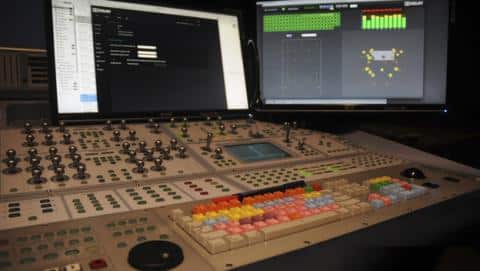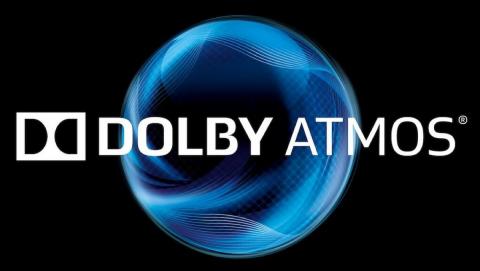What is Hi-Res Audio?

Both the biggest fans of music and those who only listen to it occasionally are always looking for a way to experience it in its purest form. When CDs (compact discs) were first introduced in the 1980s, it was a huge achievement and the biggest technological leap for music enjoyment in decades.
Even so, and with the passage of time, we do not have to settle for that thanks to the continuous evolution of technology. We now live in a time when it is possible an even better listening experience and it’s called High-Resolution Audio or Hi-Res Audio.
After years of niche positioning in the music world, Hi-Res Audio has finally hit the mainstream, thanks to a Huge support from streaming services and from some Android devices.
In this report, we’ll explain the basics of High-Resolution Audio and discuss the benefits of listening to your favorite music in this exciting new format.
What is Hi-Res Audio?
High-Resolution Audio (sometimes also called HD) is a lossless sound capable of reproducing the full range of sounds of recordings that have been mastered from higher-than-CD-quality music sources.
In simpler terms, High-Resolution Audio typically refers to music files that have a lower sample rate and/or bit depth. higher than that of the CDwhich is specified at 16-bit/44.1kHz.
And it is that, the more bits there are, the more accurate the measurement of the signal will be. High-resolution audio files typically use a sample rate 96kHz or 192kHz at 24bit.
Although it is gaining popularity now, it is fair to say that it has been around for over a decade and has a growing number of fans willing to shell out a little more money for the privilege of listening to great quality music. The difference from before is basically accessibility.
Hi-Res Audio Formats
exist various hi-res audio file formats to choose from, all with their own compatibility requirements.
Among them are the popular FLAC (Free Lossless Audio Codec) and ALAC (Apple Lossless Audio Codec) formats, both compressed but in such a way that, in theory, no information is lost. Other formats include uncompressed WAV and AIFF, DSD, and the more recent MQA (Master Quality Authenticated).
We are not going to go into a discussion of the pros and cons related to each of the formats, but the important issue is the compatibility of the file with the chosen devices and software.
What are the main advantages of these new audio files?
The main advantage attributed to high resolution audio files is sound quality superior to that of compressed audio formats such as MP3 and AAC.
Downloads from sites like Amazon and iTunes, and streaming services like Spotify, use compressed file formats with somewhat low bitrates. For example, Spotify (which, unlike Amazon Music and Apple Music, has yet to venture to improve quality) uses 320 kbps Ogg Vorbis streams.
Using lossy compression means that data is lost in the encoding process, which in turn means that resolution is sacrificed for convenience and smaller file sizes. This impacts sound quality, so this is where Hi-Res Audio comes into play.
On one hand we have the MP3 format with those 320 kbps and, on the other, the Hi-Res Audio with 24 bits, or what is the same, 9216 kbps (Just for further comparison, CDs are 1411kbps).
By having more information in the file, Hi-Res Audio tends to have more detail and texture, bringing listeners closer to the original performance, provided your system is transparent enough.
Are there any drawbacks?
Hi-Res Audio has a downside: the size of the file. Despite sounding pretty good, the music files are quite a bit larger than MP3 and ACC, for example. All this means that they will take longer to download and can dangerously drain the storage of mobile devices.
We can find songs that reach the 200 or 300 megabytes in weight, and disks that can occupy up to one or two gigabytes of storage space.
Also, if we compare it back to the old formats, the tracks are more expensive to buy and most of the popular digital music providers don’t even sell Hi-Res Audio songs, at least not yet.
Also is true that appropriate hardware and software required to be able to experience it. However, the barriers are starting to come down.
What do I need to play Hi-Res Audio?
There are a wide variety of products that can play Hi-Res Audio. It all depends on the budget you have and the method you are going to use mainly to listen to your songs.
The positive of all this is that currently much of the streaming and digital ecosystem supports hi-resincluding popular streaming platforms like Apple Music, Deezer, Tidal, or Amazon Music HD.
As for mobile devices, they are increasingly compatible with high resolution playback. However, it is still somewhat limited to high-end android modelssince Apple iPhones are not compatible with high resolution audio From the beginning.
Huawei P30 Pro, Samsung Galaxy Note 10 or Oppo Reno 2 are just a few examples of the many on the market. We leave them all linked for your reference.
If we talk about computers, your laptop, either Mac, Linux or Windowss, they will be the storage base for this content and you must also make sure that the software you use to play music also supports playback in high resolution. For example, your MacBook may be compatible but we already warned you that iTunes is not.
Of course here we include portable music players from Sony or Cowon, DACs (digital analog converters) like the AudioQuest DragonFly Cobalt or loudspeakers like the Naim Mu-so 2.
What can we expect for the future?
Knowing that there are more and more devices that support this way of listening to audio, this it is becoming a viable option for anyone interested in quality.
Even without the support of Spotify and Apple hardware, there are plenty of increasingly affordable ways to get into the world of high-resolution audio.
The immersive audio formats such as Sony 360 Reality Audio, Dolby Atmos Music and Apple Spatial, are also moving to offer higher quality music experiences, although not necessarily high resolution, although they are certainly options.
The next and biggest hurdle for Hi-Res Audio to overcome is its incompatibility with lossless bluetooth transmission and therefore with wireless headphones.
Despite these small remnants, thanks to increasingly affordable storage, higher quality playback hardware, and faster and more affordable 4G and broadband download, it’s safe to say that the HRA is no longer too expensive, nor its files are too big to download and store compared to MP3.
Of course, it’s important to choose your equipment carefully and understand what makes Hi-Res Audio different.
Reference-computerhoy.com
